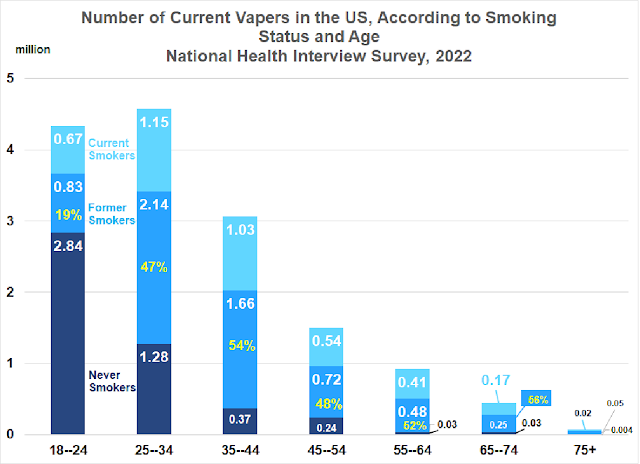Following on my post last week discussing dramatic improvement in vaping and smoking rates from the 2022 National Health Interview Survey (NHIS), today I present additional positive news from that survey.
The CDC last year counted 14.9 million current vapers, representing a 64% increase in just two years. Importantly, 6.1 million vapers, or 41%, are former smokers. This is the fourth NHIS survey in a row with 40+% of vapers having stepped away from the fire. Can we prove that all of them used vapes to quit? Of course not, but former means smoke-free, and it doesn’t matter how they quit, or how they stay that way.
Following last week’s format, the next chart shows the number of current vapers according to smoking status and age. The pattern here is crystal clear. Young adults age 18 to 24 are not quitting smoking in high numbers by vaping, but 2.8 million, or 65%, of current vapers in that age group never smoked. That is just as important, because never smoking is healthier than former smoking, regardless of vaping. For all older age groups, the percentage of former smokers is around 50% or higher, which is vitally important since those are the ages when smoking-related diseases start kicking in, killing smokers.
The entire American health establishment, including the CDC and FDA, are obsessed with teen vaping. A Google search for adult e-cigarette use in 2022 yields no results. In other words, health authorities are turning blind eyes toward the nearly 15 million adults who enjoy nicotine and tobacco with little or no risk, as smoking inexorably – though still too slowly – declines.
Imagine how fast sales and use of combustible cigarettes would disappear if public health leaders simply told smokers the tobacco truth – that vaping is 95% safer than smoking.














